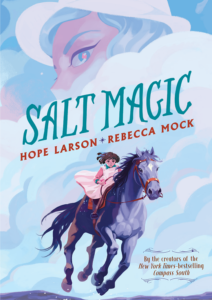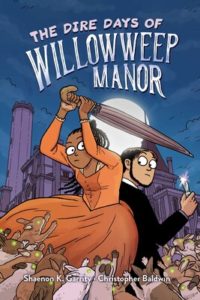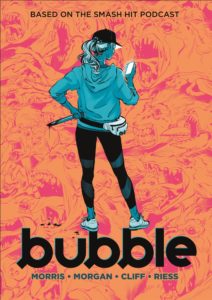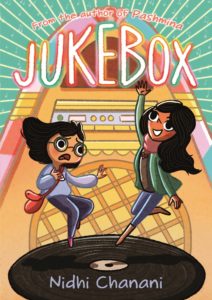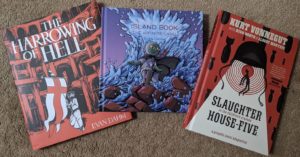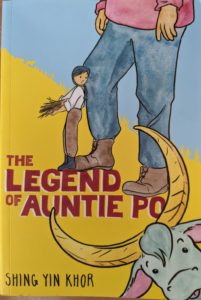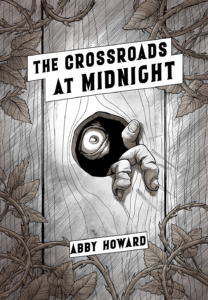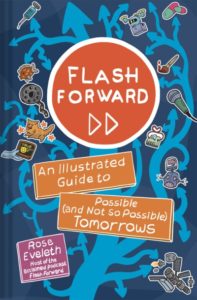Fleen Book Corner: DUCKS: Two Years In The Oil Sands
I’ve long said that my favorite of Kate Beaton’s work is her next, because she keeps getting better; none of her works have been easily surpassed, but when the stars go cold and the final account of capital-A Art is taken, I think DUCKS: Two Years In The Oil Sands will stand at the peak not just of Beaton’s work, but of autobiography, of comics, and of explorations of what turns people into their worst selves. It is in all things a masterwork, as I knew it would be since those five very tall strips were posted back in 2014. There are spoilers ahead, so if you want to go in cold maybe stop reading now. But if you do go in cold, know that DUCKS is at times a tough read that both clearly tells you where it’s headed and also catches you by surprise. Survivors of any kind of trauma take note.
I’ve been privileged to know Kate Beaton for more than a decade; she has done me many a kindness in that time, in addition to creating some of the best comics ever made and allowing us all to share in them for absolutely free. Sometime in the last decade I was standing in the Webcomics Pavilion at San Diego Comic Con when the word got out that she had posted new comics featuring her mom — what I’ve always called Kate’s momics — to Tumblr and we all stopped what we were doing to read them. I said out loud that I would sacrifice the careers of everybody in that enormous building if it meant momics every day, and I meant it.
Something in those sometimes very simple drawings is the singularly most efficient expression of emotion and emotional truths, whether it’s a confrontation of the myths we tell ourselves to make the right person the hero (with squats), a surgical dissection of fake feminist tropes in comics (sometimes with squats, sometimes without), or a discussion of little known historical figures that we should revere (no squats this time). And they’re never more emotionally resonant than when she’s talking about the life she’s lived.
Which brings us to DUCKS, the story of the two years that Beaton worked in the Alberta oil sands to pay off her students loans; she’s one of a multitude of Maritime Canadians that had to leave home to find work, torn (as she tells us in the opening pages) between the pull of the home that begs them to stay and the need to leave to support themselves and their families as industry after industry has closed up shop and left an entire people behind. If all the Cape Bretonners that had to leave came back, she tells us, the island would sink. As befits Beaton’s very personal approach to comics, DUCKS opens with Beaton introducing herself and her situation; she’s drawn a little less loosely in this narrative interlude, a bit of reality before her usual style asserts itself and her face becomes a little less specific.
Scott McCloud famously taught us all talked about visual accuracy and identification in comics — a more photo-realistic representation of a person, place, or item will give it distance, and one that’s more abstract or cartoony invites the reader to see themselves and their experiences in that representation. The little extra verisimilitude in the opening pages introduces us to somebody else; the little extra abstraction in the remaining 400 pages means that increasingly large numbers of the characters portrayed could be us, or people we know.
So when we follow the story of the oil sands — a place where the dirtiest petroleum in the world is somewhat easily accessible from the surface, which sufficiently high oil prices make it economically viable to rip it from the earth¹ and ship it halfway across the world² so that enormous sums can be made by people removed from those that bear the costs — we are following the story of people in various stages of desperation and need, far from their homes, being paid to do dirty, dangerous work in some of the most inhospitable land on the planet. If one were forced to find but one overarching message in DUCKS, it would be how living in extreme duress changes people, exploring how they became the people they are in the camps and work sites, and the degree to which they became different from who they are at when they’re at home.
Throw a few thousand people together in a place where it’s 50 below in the winter, hours from anywhere, where boredom is often met with drugs and alcohol, where the men outnumber the women by an extreme degree³, where the default state is one of hypermasculine aggression and posturing, and it’s no surprise that things are going to take a bad turn. From almost the moment of her arrival in Fort McMurray, Beaton is subjected to shameless sexual propositioning and the kind of attention that serves as a reminder that she’s not really a full person, she’s a distraction, a novelty, some thing that exists to relieve the boredom of the men in camp and in town. Either that or she’s a humorless bitch and you don’t want to be a humorless bitch, right?
It becomes the inescapable background radiation of her days, just trying to do a job and get through another overtime shift, page after page reducing it to Just How Things Are, so ordinary that although you know it can escalate, you can see it coming a hundred pages off, it’s still going to catch you by the throat when the rapes happen. Knowing the circumstances that she’s in, seeing it coming narratively is not the same as watching Kate disappear from view behind blacked-out panels and reappear with a thousand-yard stare.
The oil sands leave scars, the scars on the earth translated to the bodies of the men that work there, passed along to the women that don’t measure up as independent people with agency. Some find ways to confront the scars and try to heal from them; most take no notice of them or how they were changed. Beaton confides in coworkers, men who don’t get it and react with laughter, women — including her sister, Becky — who share their own stories of rape from life before the camps.
DUCKS won’t let the reader off the hook with the grimly comforting thought that the oil sands are a unique place of danger to steer clear of and you’ll be okay, not when we’re told about what happened back home or at university where the men are supposed to be themselves and not who the oil sands made them. Trauma and regarding others as not full people is everywhere, it’s just thrown into sharper relief some places.
After a reprieve working at the Maritime Museum of British Columbia in Victoria — a time when she started creating comics, just before the wider world learned of her work — Beaton is back in the oil sands, watching the balance on her student loan debt tick towards zero entirely too slowly, finally making her way home only to find that the oil sands don’t relax their hold on you that easily. Or, as she put it on the page where the original stories that became DUCKS were first posted, the story … is about a lot of things, and among these, it is about environmental destruction in an environment that includes humans.
DUCKS is, by turns, heartbreaking, enraging, courageous, a call to witness, suffused with small moments of grace and kindness, and the hardest read that you can’t put down once you pick it up. It’s a singular story that belongs to one person and is also shot full of universal truths that we may not want to acknowledge but must. It will, without fail, be attacked by those that don’t want to acknowledge those truths. It is a masterwork, the best book that I wish had never needed to be written, and should be the next item on your to read list.
DUCKS is published by Drawn & Quarterly, and is available wherever books are sold. Kate Beaton is presently on book tour, and if at all possible you should attend one of the events.
_______________
¹ In circumstances that run roughshod over any sense of environmental responsibility and the treaty rights of various First Nations.
² Ditto.
³ In the book, Beaton gives a ratio of 50:1, but has since noted that it was highly variable. Suffice it to say, it’s a highly imbalanced gender situation.

